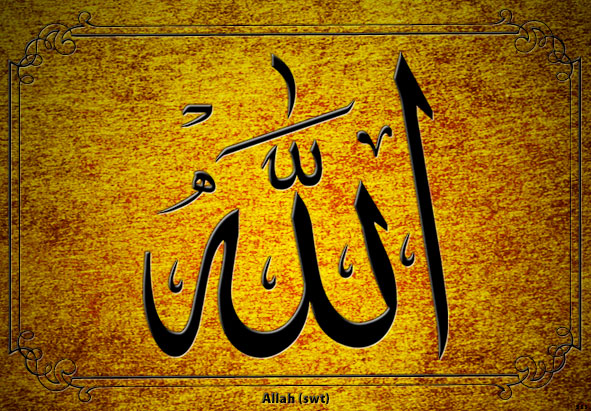 An interview with Professor Sulayman Nyang
An interview with Professor Sulayman Nyang
NYANG: The second point that you know which I think is very critical – so these are common grounds whether they are Muslims from India, Africa, Pakistan, Syria, Lebanon, Palestine – it doesn’t matter…
The second point that I think is critical for Muslims in the United States and all over the world is to recognize the fact that in order for them to succeed in doing da`wah, and in promoting the word of Allah (swt) and the example of Prophet Muhammad (s) – they have to like each other, otherwise you cannot be impressive. How you going [to] tell a Christian or a Yahudi (Jew) or non-believer that Islam is very full when he can see that you don’t like your other Muslim brother. It doesn’t make sense. You cannot be effective. The only way you can be effective is to prove to him or her – that listen – I disagree with my brother – just like in your own family you can disagree with your brother or your sister… So it’s just a difference of opinion. So this way the person looking at you will say ah ha, this person does not only have a message but he also has an example in himself or herself, and these two points are very critical…
Q: How do one implement this here between the various organizations? Because this is the main issue. We don’t disagree with each other on the general level. For example when I sit with Dr.Muzammil Siddiqi or this one or with that one, you see that there is a mutual understanding. When it goes high to the – [person sitting on [top of] his organization, then the whole idea changes.
NYANG: You see, this is where the structures work against unity. Because the structures are institutionalization of narrow interests, you see, and then you see this is where the external forces become dangerous and this is what I keep telling the Muslims in America – if the Muslims are genuinely interested in planting the seeds of Islam in America they should not allow themselves to be controlled by the forces outside them. Like what you are saying… people will do things Islamically if it advances their interest. What does Islam do for me instead of what can I do for Islam? That’s where we started the conversation. The external forces, sometimes governments, sometimes international Muslim organizations abroad – they feel that they can manipulate groups….
Q: They have such bad ideas about Tasawwuf [Sufism]; … they brainwash them … that Tasawwuf is shirk (associating partners with Allah), so anyone that has a Sufi background – they come against him without trying to know why …because they learned that Tasawwuf is not existing in Islam, which is incorrect. So that’s what …many Muslims are facing in the United States. But in our countries if you say that you are of this Tariqa [spiritual path] or that Tariqa, they will be happy!
On Wahhabization of the Islamic movement
NYANG: Yeah, now you see what is happening– if you look at the intellectual history, the social history of the Muslim organizations in America, you can see the reason why this is the case. And again it’s because many of these people – if you take the MSA, which we started when we just came here. It started in ’64. I came maybe one year later after they started [with] Ahmad Sakr, and all the others.
You have three elements who were instrumental in bringing about the MSA. You have those people from the subcontinent who were followers of Mawlana Maududi. Anis Ahmad and all those people – Iqbal Yunus, and all those people. Then you have people who came from the Arab world who would identify with the Ikwan al-Muslimoon [Muslim Brotherhood]. You know, Abu Gideri, Tijani. We’re neighbors, you can name their names. And then those who came from Iran, who were the followers of Ayatollah Khoei, people like Mosadeq; [or the one] who became foreign minister after the [Iranian Islamic] Revolution – people like Ibrahim Yazdi. Those elements, they were students here. These groups, the followers of Ayatollah Khoei, those from Najaf in Iraq; the followers of Mawlana Maududi; and the followers of Sayyid Qutb, Hassan al-Banna and the Ikhwan [al-Muslimoon] – they were the ones who started the MSA in America.
Many of those people, they have a version of Islam – even though Maududi himself has some Tasawwuf connections, but they became very rigid in terms of their Islam, and to some extent many of them had to deal with the Salafi people. So they turned against Tasawwuf.
…If one is to really write an article about American Muslims’ resistance to Tasawwuf, you have to trace the roots back to this. And then you see what happened is – because of the politics in Arab world, at the time these people were coming in, those people who were followers of Ayatollah Khoei – they were opposed to the Ba`ath Party in Iraq and Syria. So naturally those kids, our generation, they were older, I was the young… Many of those …so the Ba`athists were opposed by these Muslims, because in the 50’s and 60’s most of the Arab kids I went to school with in America were secular…. They were Muslims, but Islam was not seen as progressive, because they were all Arab nationalists – [saying,] “Nasser, Nasser, Nasser. “ That was the other thing.
So the Ikhwan people were very marginalized among the Arab intellectual groups. And those people who were followers of Ayatollah Khoei from Iraq and Iran, they were also marginalized, because these were young Arab, Iranian, Pakistani, Indian Muslims who were Islamic.
We used to pray – there are a lot of people I know, now many of them are active, but when we were students, many of them from Africa, and many from Pakistan – they didn’t want to pray. Many of them now, they are very active. And…their kids are now going to college. In those days they were just what I called “grasshopper” Muslims.
I want to say why Tasawwuf was rejected: most of those [Muslims] were secular…and…they came back to Islam after the Iranian Revolution. Many of them, they have kids, they’re now professionals in America. They moved from secularism into Islam. And the kind of Islam they know is ISNA. And the other thing – they come back from being grasshoppers to being ‘regular’ Muslims.



